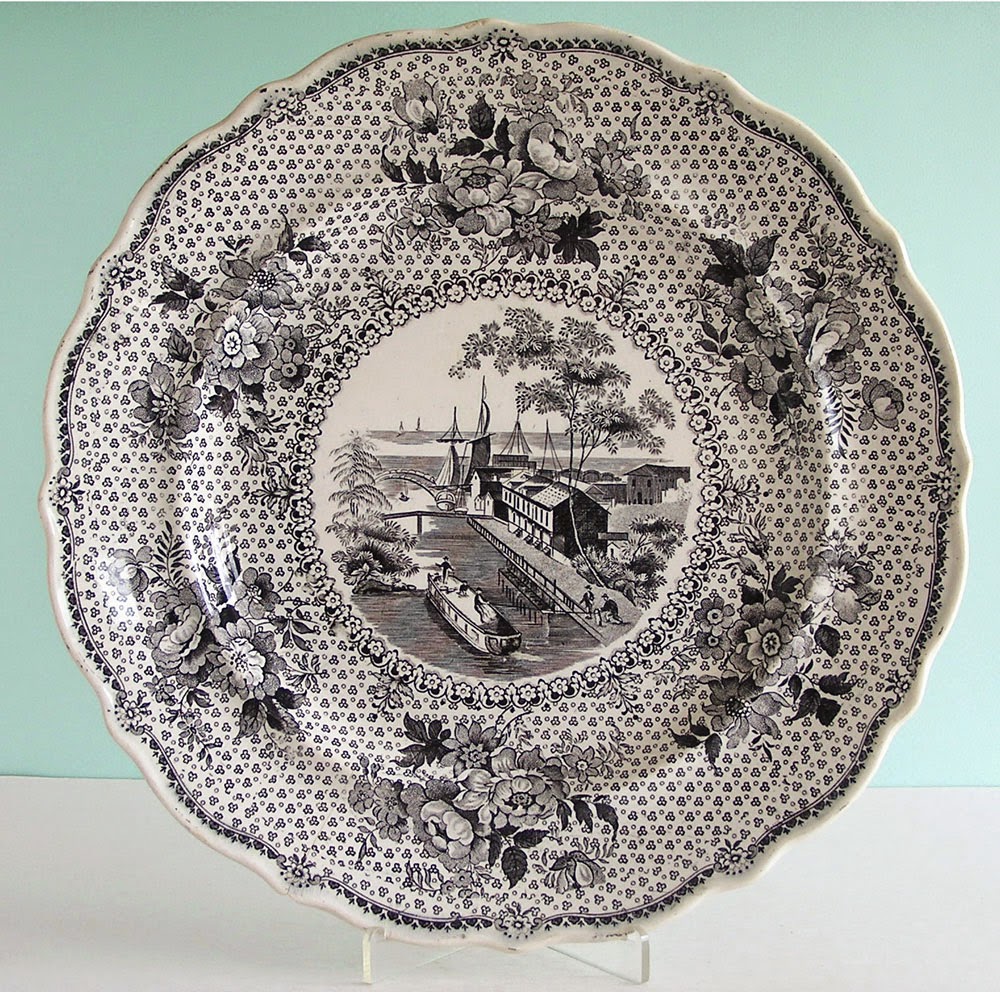 |
| Ralph Stevenson, Erie Canal at Buffalo |
By connecting the Hudson River to the Great Lakes, the Erie Canal revolutionized the transportation of goods and people. American farmers had started exporting food crops to Europe on a large scale during the French Revolutionary and Napoleonic Wars (1793-1815). However, even as international exports increased, it remained very expensive to transport goods within the United States. In 1816, $9 could move one ton of goods across the Atlantic, but only 30 miles across land. The construction of the Erie Canal, which began in 1817 and launched a canal-building boom, would change all that. Now farmers who had previously grown crops for their own families began growing for the market. They earned cash and purchased goods they had previously made themselves—or gone without.
Canals were accompanied by other improvements in transportation—the continuing development of steamboats, new roads offering swift stagecoach service, and, by the 1830s, railroads. New York City, as the port of entry to the Hudson River, secured its position as the largest and most economically important city in the nation. The flourishing steamboat industry turned St. Louis and Cincinnati into centers of trade, and Chicago would ultimately become the railroad hub of the Great Lakes region.
 |
| Map of the Niagara region from The Northern Traveller, 1831 |
Travel to Niagara from places outside Canada had been difficult through most of the 18th century, because it involved crossing through the territory of the Iroquois Six Nations Confederacy. In the early 1800s, there was not much in the way of accommodation for those travelers who did make it—just a small village at Lewiston, with slightly more on the Canadian side. The disruptions of the War of 1812 also hindered growth in the area.
 |
| The first tourist guidebook published in the U.S. |
The development of Niagara as a tourist destination was also closely linked to the Hudson Valley. As noted in my previous post, the Hudson Valley became a tourist spot in the 1810s. As travel and facilities in the valley improved, access to destinations beyond the valley improved as well. The Hudson Valley, Saratoga Springs, the Erie Canal, Niagara, Montreal, Quebec, and Boston all became linked in a standard tourist itinerary known as the “Fashionable Tour.”
 |
| Enoch Wood, Niagara from the American Side |
 |
| Niagara Falls from under the Table Rock John Hill after William James Bennett, 1829-30 |
Still, many visitors did find that Niagara lived up to, or even surpassed, their expectations. The English writer Frances Trollope, who was highly critical of the United States in Domestic Manners of the Americans (1832), had only praise for Niagara Falls:
“Wonder, terror, and delight completely overwhelmed me. I wept with a strange mixture of pleasure and pain, and certainly was, for a time, too violently affected in the physique to be capable of much pleasure; but when this emotion of the senses subsided, and I had recovered some degree of composure, my enjoyment was very great indeed. To say that I was not disappointed is but a weak expression to convey the surprise and astonishment which this long dreamed of scene produced.”
Two excellent sources on the history of early American tourism are John F. Sears, Sacred Places: American Tourist Attractions in the Nineteenth Century (Oxford University Press, 1989) and Richard H. Gassan, The Birth of American Tourism: New York, the Hudson Valley, and American Culture, 1790-1830 (University of Massachusetts Press, 2008)
If you’re interested in the later history of Niagara Falls as a tourist destination, check out Karen Dubinsky, The Second Greatest Disappointment: Honeymooning and Tourism at Niagara Falls (Rutgers University Press, 1999).
Much more on the Erie Canal can be found at eriecanal.org

No comments:
Post a Comment